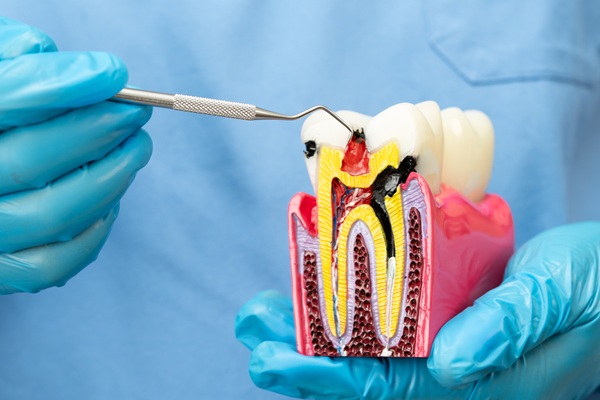When Root Canal Retreatment Is an Emergency

Root canal retreatment can prevent infection, pain, or swelling from compromising oral health. A root canal saves a tooth by removing inflamed or infected pulp and sealing internal spaces, but certain situations call for retreatment to restore stability. Recognizing the signs that this treatment may be urgently necessary allows a dental provider to act quickly and protect the smile. With prompt care, patient comfort returns faster, and the tooth’s long-term outlook improves.
What is root canal retreatment?
Root canal retreatment is an endodontic procedure performed on a previously treated tooth when symptoms or X-rays show persistent or recurrent disease. During retreatment, the dental provider removes the existing filling materials, cleans and reshapes the canals, and seals the spaces with new filling material. The goal is to eliminate lingering bacteria, resolve inflammation, and create a fresh, leak-resistant seal that supports a new dental restoration. Typically, this restoration is a tooth-colored dental crown.
A provider may recommend root canal retreatment for several reasons. For one, complex canal anatomy can conceal an additional canal that was not addressed during root canal therapy. Alternatively, new decay may have penetrated the initial crown or filling, reintroducing bacteria into the canal system. A cracked restoration, loosened crown, or delayed final crown placement can also make way for contamination, resulting in renewed infection and discomfort.
When root canal retreatment is an emergency
Certain red-flag symptoms call for same-day root canal retreatment from a dental provider. Severe, throbbing pain that disrupts sleep, facial or gum swelling with a pimple-like bump, warmth and tenderness over the jaw, or a bad taste from drainage often indicate active infection around a previously treated tooth. An abscess can build pressure quickly and damage nearby bone and soft tissues. The good news is that prompt care and retreatment can help relieve pain quickly and save the tooth.
Higher-risk situations also lower the threshold for urgent dental care. Orthodontic care, scheduled travel, or upcoming surgery can complicate infection control if retreatment is delayed. Patients managing diabetes, heart conditions, or immune challenges face faster-moving infections and slower healing. It is recommended to consult a dental provider promptly if signs indicate the need for urgent retreatment.
When to go to the ER before seeking retreatment
While dental providers can address urgent dental problems, they do not treat life-threatening conditions. A hospital emergency room (ER) is the right setting if any of the following appear:
- Swelling that spreads toward the eye, cheek, or neck
- Difficulty breathing or swallowing
- Uncontrolled bleeding
- Fever higher than 101 degrees Fahrenheit with chills or confusion
- Facial trauma suspected to involve a broken jaw
These signs indicate airway risk or systemic infection and require hospital-level care before dental treatment can resume.
Contact us for prompt root canal retreatment
Fast, decisive care turns a stressful dental flare-up into a manageable plan. A dental provider can triage symptoms and work quickly to manage pain and swelling through root canal retreatment. Clear communication about timelines, restoration needs, and home-care steps helps prevent reinfection. With early intervention, most retreatment cases restore comfort and function for years to come. Contact us today at (217) 334-4355 to learn more.
Request an appointment here: https://www.buffaloprairiedental.com or call Buffalo Prairie Dental at (217) 334-4355 for an appointment in our Quincy office.
Check out what others are saying about our dental services on Yelp: Root Canal in Quincy, IL.
Related Posts
Are you looking into broken tooth restoration options? When someone breaks one of their teeth, the options for treatment depends on the severity of the break. General dentists recommend early treatment for the highest chance of a successful restoration and reduced risk of future oral health issues.Teeth can break for several reasons, and understanding the…
Dental veneers are a popular cosmetic solution for improving the appearance of teeth, offering a natural-looking, durable option for enhancing smiles. However, like any dental restoration, dental veneers can wear out over time or experience damage that may require replacement. Knowing when it is time to replace your dental veneers is crucial for maintaining your…
Although X-rays in general dentistry have been used for ages, digital X-rays are proving to be more efficient and safer. They offer numerous benefits that traditional ones do not, making them more popular among general dentistry practices. Here is what you can expect from the use of digital X-rays in general dentistry.Outlined below are some…
Partial dentures are a great way to improve your smile, oral health, and ability to function by replacing missing teeth. It is helpful to have a full understanding of what partial dentures are and why they are often the more preferable treatment solution for patients to decide if treatment is right for you.This review defines…
